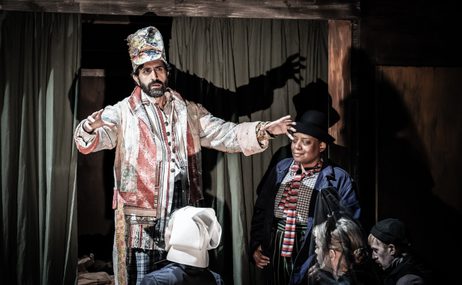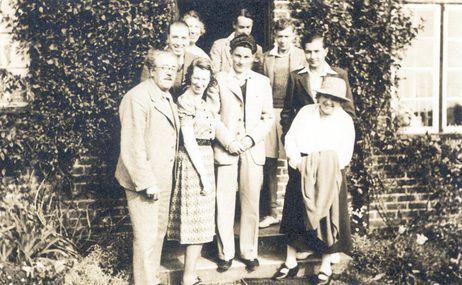Presented by Nicholas Clark
1945 was a particularly busy year for Britten. He witnessed the premiere of his opera Peter Grimes in June, and would also see the first performance of his second String Quartet in C in November. In addition to this he was engaged in the composition of incidental music for Ronald Duncan’s play This Way to the Tomb and Louis MacNeice’s radio play The Dark Tower. And he ended the year with writing the music for what would become The Young Person’s Guide to the Orchestra. During the summer he embarked on a tour of Germany as accompanist for the violinist Yehudi Menuhin, stepping in for Gerald Moore. Their tour included a performance for Holocaust survivors at Bergin-Belsen Concentration Camp. Following the recent liberation those who had survived the horrors of the camp awaited repatriation. A member of that audience, the cellist Anita Lasker Wallfisch (who in later years played for Britten as a member of the English Chamber Orchestra) has strong recollections of Menuhin and Britten’s concert. Interestingly, she remarked in a letter following their recital not so much on Menuhin’s performance, but on the dexterity and talent at the keyboard of the unknown young man who accompanied him.
‘…And then on the other side there were the millions of D.P’s (displaced persons) in, some of them, appalling states, who could scarcely sit still & listen, & yet were thrilled to be played to. We stayed the night in Belsen, & saw over the hospital – & I needn’t describe that to you’.
This was how Britten wrote about his experience of the camp to Peter Pears, in a letter of 1 August 1945. His lack of description arose from an inability to put into words the human suffering and the consequences of unimaginable cruelty that he encountered. It is little wonder that shortly afterward Britten decided to encapsulate some of his feelings in the language of music, into a setting of poems by John Donne. Donne’s conflict between thought and duty, belief and devotion – Donne was Dean of St Paul’s Cathedral – is etched into a series of sonnets which Britten chose to turn into a song cycle for high voice and piano. It’s possible that Britten believed that the inner strife and torment that Donne felt matched his own emotional state following his return from Germany. The settings of several of the sonnets (Britten set Nos. IV, XIV, III, XIX, XIII, XVII, VII, I, X from a set of 19 poems) demonstrate the fiery temper, burning anxiety that is suggested by some of the texts. By contrast, a setting of Sonnet No. XVII ‘Since she whom I lov’d’, has a much calmer, reflective tone. This setting is an elegy for the death of a beloved companion, conveying a sense of resignation toward loss. The speaker admits ‘I allow/ My Love to Saints and Angels things divine’ but also mourns deeply, suggesting that in reality there is little or no consolation for him.
Perhaps Britten’s own recent experience of suffering made him all the more aware of how much he valued his own beloved. The sonnets carry the dedication ‘For Peter’ – Peter Pears who first performed them with Britten at the Wigmore Hall in London on the composer’s birthday, 22 November, 1945.
Watch more

74th Aldeburgh Festival
09 – 25 June 2023
A Song at The Red House: 'Tell me the Truth About Love', by Benjamin Britten
Soprano Elise Caluwaerts performs one of Britten's cabaret songs, with a witty text by WH Auden. Accompanied by Lucy Walker on Britten's Steinway piano…
Work of the Week 24. Violin Concerto
Presented by Roger Wright
